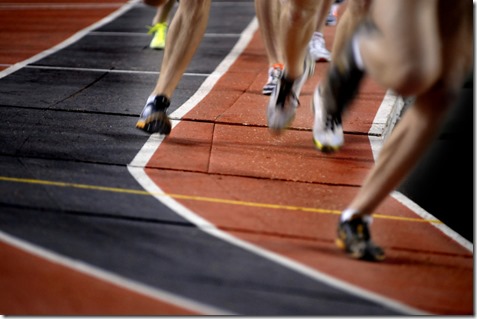
Training in Godliness
 Train yourself in godliness, for, while physical training is of some value, godliness is valuable in every way, holding promise for both the present life and the life to come. The saying is sure and worthy of full acceptance. For to this end we toil and struggle, because we have our hope set on the living God, who is the Savior of all people, especially of those who believe. (1 Timothy 4:7-10)
Train yourself in godliness, for, while physical training is of some value, godliness is valuable in every way, holding promise for both the present life and the life to come. The saying is sure and worthy of full acceptance. For to this end we toil and struggle, because we have our hope set on the living God, who is the Savior of all people, especially of those who believe. (1 Timothy 4:7-10)
Ivan Lendl, once the #1 professional men’s tennis player in the world, said that if he took one week off, he needed a month of training to recover the feel in his hands and the reactions of his feet. “If I don’t play for two weeks, I can’t hit a topspin,” he said. “I just lose the timing, I can’t move on the court; I lose everything.”
One neuroscientist says that it takes about 10,000 hours of practice to master any craft. 10,000 hours. If you wonder how long it would take a person to get that many hours of practice in, studies on professional athletes and musicians that say that it takes about three hours of practice a day, 20 hours a week, for 10 years to achieve the level of expertise we associate with world class. Do the math, and that’s 10,400 hours.
Better get busy.
Scientists have tried to design robotic arms that could throw and catch a football and found that their computers can’t keep up with the human brain. Catching a football requires constant microsecond adjustments to the flight of the ball. A computer can predict the trajectory, but by the time the computer has determined exactly where the ball will land, it is too late to start moving.
The human brain, on the other hand, gets the hands moving while it still has a poor sense of the ball’s location, predicting the ball’s flight path with incomplete data while taking into account wind, rain, and the impending hit of the defensive back.
A computer needs to go through literally millions of steps to solve the numerous mathematical equations to catch the ball. The brain of a trained athlete, however, doesn’t make such calculations, but actually predicts what will happen by retrieving the old information of hundreds of thousands of catches and throws.
The memory of how to catch a ball was not programmed into your brain at birth like bundled software in a new computer; it was learned over years of repetitive practice, and is stored, not calculated, in your neurons.
Paul’s example of physical training as it relates to spiritual training is therefore very appropriate. Godliness, he says, doesn’t come naturally. It’s a spiritual work, which means that it is in part a work of God, but it also a something we have to accomplish. If we are spiritual beings we are also bodily beings.
As Dallas Willard points out in The Divine Conspiracy, every spiritual thing we do involves our bodies, even if that involvement is to still our bodies and quiet our minds. If you’ve ever tried to do either you know how much discipline and practice it takes.
Maybe 10,000 hours?
Paul uses word like toil and struggle. Anyone who thinks that living the Christian life is either passive or easy has to ignore such words. It takes practice, discipline, perseverance, and desire.
You have to want it bad, and pursue it relentlessly.
Have you ever heard a beginning music student practicing? The violin sounds like a cat with it’s tail under a rocking chair, a saxophone sounds like an angry goose, and a guitar sounds like the clunk clunk of someone walking down wooden stairs. A lot of muscle memory has to be developed before the beauty of the instrument is revealed.
The Christian life is no different. Participation in worship and Bible study every week is the bare minimum, but if that’s all you do it will be like the music student who goes to lessons every week all their life but never practices between lessons, or the athlete who plays a game once a week but doesn’t practice in between.
There will be little improvement, and lot’s of frustration.
Discipleship isn’t a program run by a church, it’s a lifestyle of developing muscle memory through daily, often repetitive, practice, so that when it’s game time, we’re ready.
Photo by © Can Stock Photo Inc. / eric1513
 I am a lifelong student of the Bible, and have been a pastor for over twenty-five years. My desire through this blog is to help people see things in the intersection of Scripture and real life that they might have missed. The careless handling of the Bible is causing a lot of problems in our churches and our culture--and is literally turning people away from the church, and, sometimes, God. I hope to treat Scripture with the respect it deserves, and, even if you don't agree with what I say, give you some insight.
Feel free to leave a comment. I promise to respond to you. All I ask is that you be respectful in your comments.
I am a lifelong student of the Bible, and have been a pastor for over twenty-five years. My desire through this blog is to help people see things in the intersection of Scripture and real life that they might have missed. The careless handling of the Bible is causing a lot of problems in our churches and our culture--and is literally turning people away from the church, and, sometimes, God. I hope to treat Scripture with the respect it deserves, and, even if you don't agree with what I say, give you some insight.
Feel free to leave a comment. I promise to respond to you. All I ask is that you be respectful in your comments. 
Connect with Me